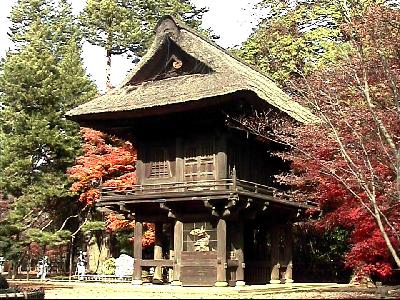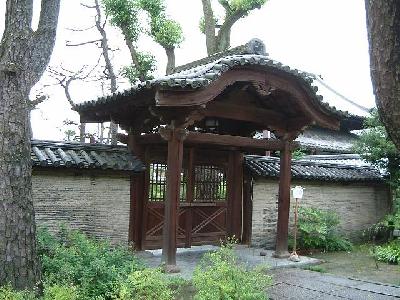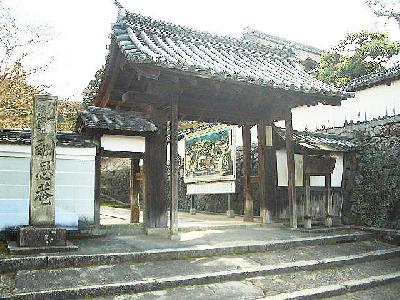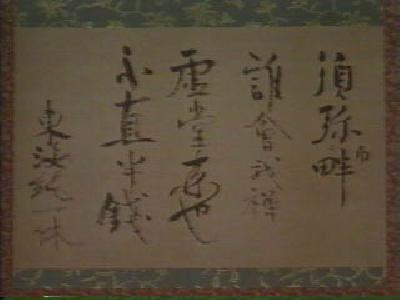Ikkyuu was a Zen priest from the Daitokuji sect of Rinzai lineage in Muromachi period (1338-1573). His birth name was Soujun, which he later changed to Ikkyuu. He also used the sobriquet, Kyouun or Crazy Cloud. Ikkyuu was born in 1394 in Kyoto. He is said to be an illegitimate son of Emperor Gokomatsu. Later in life he took a very different path than when he was younger and was regarded a prodigy for his intelligence and talent. In his twenties he denounced the establishment and religious precepts and lived his life as an eccentric priest. Ikkyuu became an acolyte at Ankokuji at the age of six. He was a gifted child especially in poetry writing and became well known in Kyoto city. However, at the age of twenty, he attempted suicide. After a difficult period of depression lasting several years he recovered and was said to be enlightened upon hearing a crow’s caw. He was twenty six at the time. Now his life took a turn and he left his temple and lived among ordinary people, partaking in worldly pleasures including drinking and eating meat. His relations with women, especially to a blind woman called Mori in his last years, and his breach of all sorts of Buddhism precepts surprised and amused people. It wasn’t until much later when his idea of Fuukyou, in which denying religious precepts was also a way towards enlightenment, became accepted as a true Zen Buddhism teaching and his poetry and calligraphy became highly regarded. He died in 1481 aged 88. He wrote several important works including Kyouun-shuu (Crazy Cloud Anthology).




















